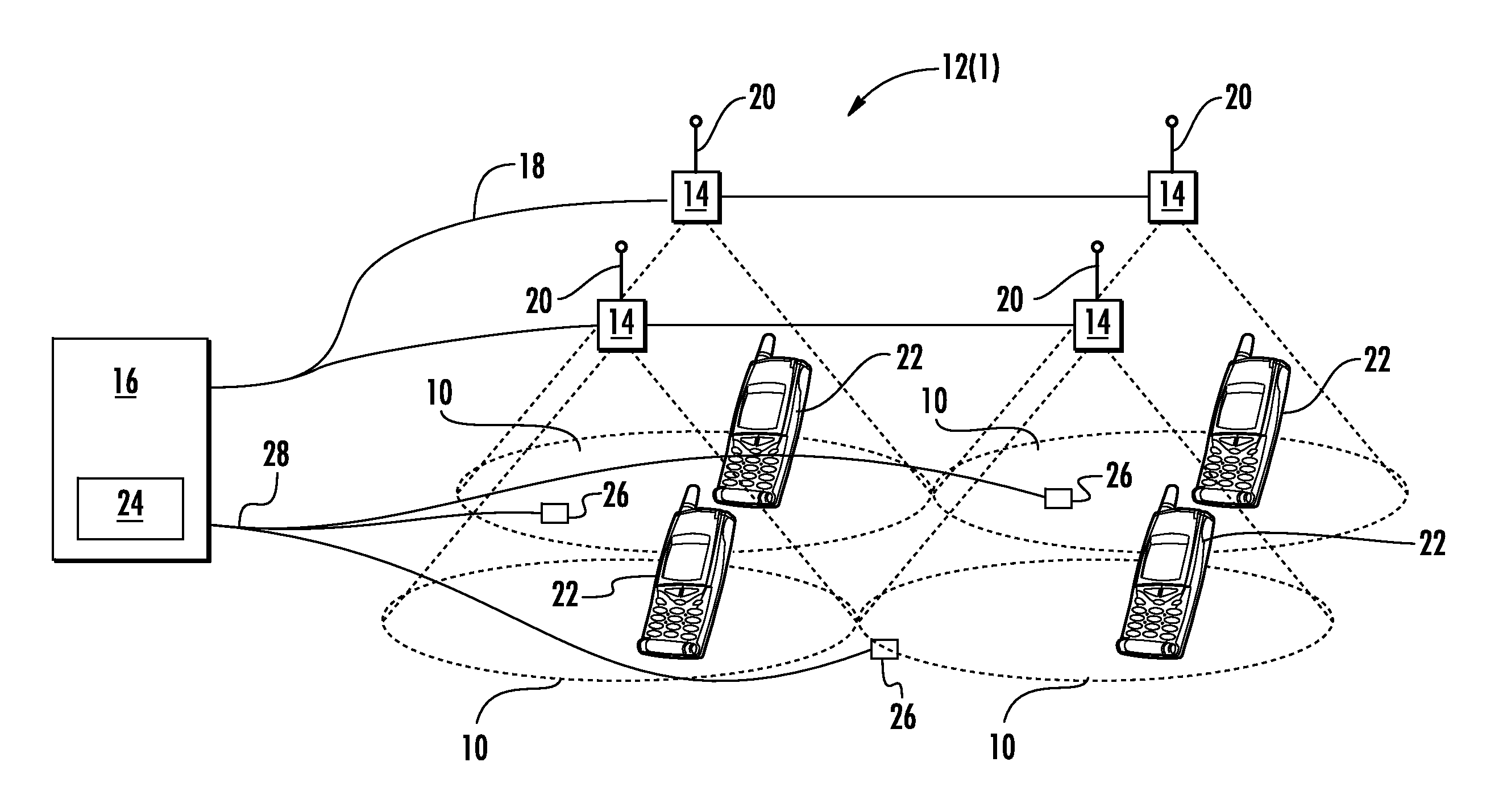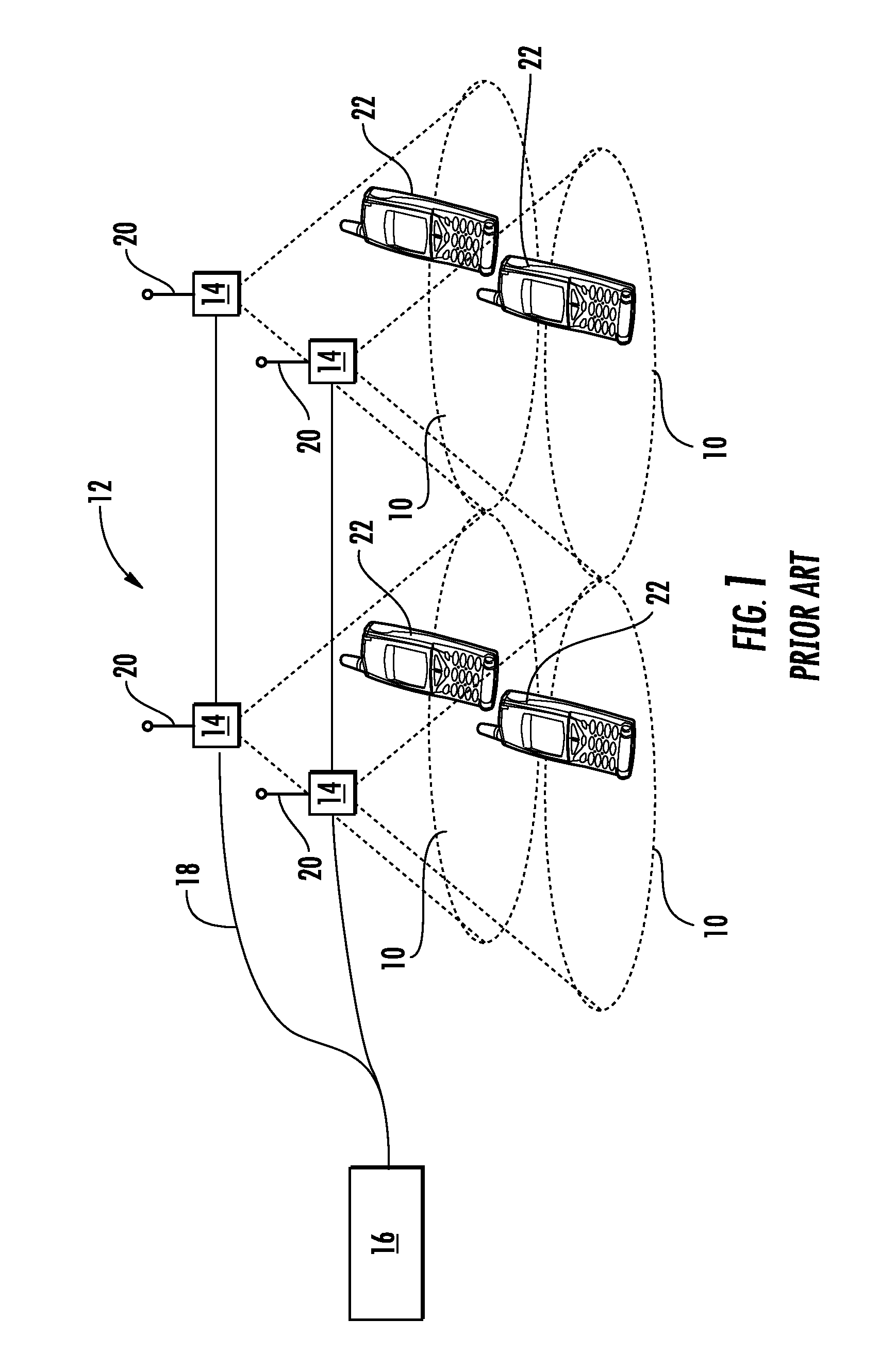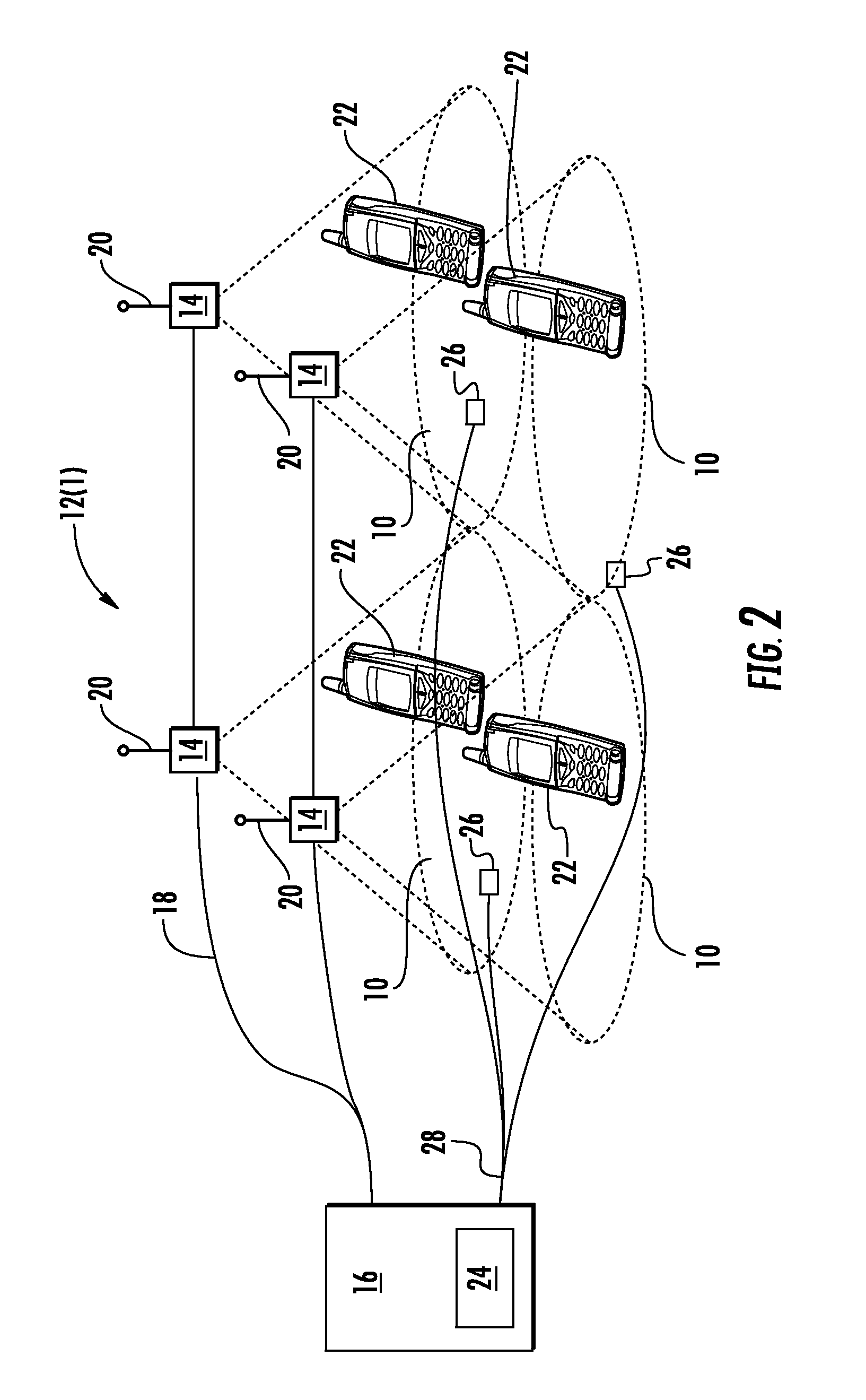Power management in distributed antenna systems (DASs), and related components, systems, and methods
a distributed antenna and power management technology, applied in power management, sustainable buildings, high-level techniques, etc., can solve the problems of large energy consumption of high-power equipment used for distributing signals over long distances, over-powering the system, and consuming 45 w or more per remote unit, etc., to achieve the effect of reducing the power consumption of one or more remote units, increasing the power consumption of the remote unit, and without added expense and energy consumption
- Summary
- Abstract
- Description
- Claims
- Application Information
AI Technical Summary
Benefits of technology
Problems solved by technology
Method used
Image
Examples
Embodiment Construction
[0009]Embodiments disclosed in the detailed description include methods, apparatuses, and systems for power management in a distributed antenna system (DAS), such as a distributed communications system, and related components, systems and methods. Embodiments include determining user activity at remote units of the DAS. In some embodiments, when user activity in one or more remote units falls below a specified threshold, power usage by the one or more remote units is reduced. In this manner, as a non-limiting example, during periods of low user activity, users within a coverage area may receive continuous coverage without added expense and energy usage required by running the DAS at full power. In some embodiments, when user activity in one or more remote units rises above a specified threshold, power usage by the remote units is increased. Power usage may be reduced and / or increased by turning select remote units on or off, by increasing or reducing an operating voltage of one or m...
PUM
 Login to View More
Login to View More Abstract
Description
Claims
Application Information
 Login to View More
Login to View More - R&D
- Intellectual Property
- Life Sciences
- Materials
- Tech Scout
- Unparalleled Data Quality
- Higher Quality Content
- 60% Fewer Hallucinations
Browse by: Latest US Patents, China's latest patents, Technical Efficacy Thesaurus, Application Domain, Technology Topic, Popular Technical Reports.
© 2025 PatSnap. All rights reserved.Legal|Privacy policy|Modern Slavery Act Transparency Statement|Sitemap|About US| Contact US: help@patsnap.com



